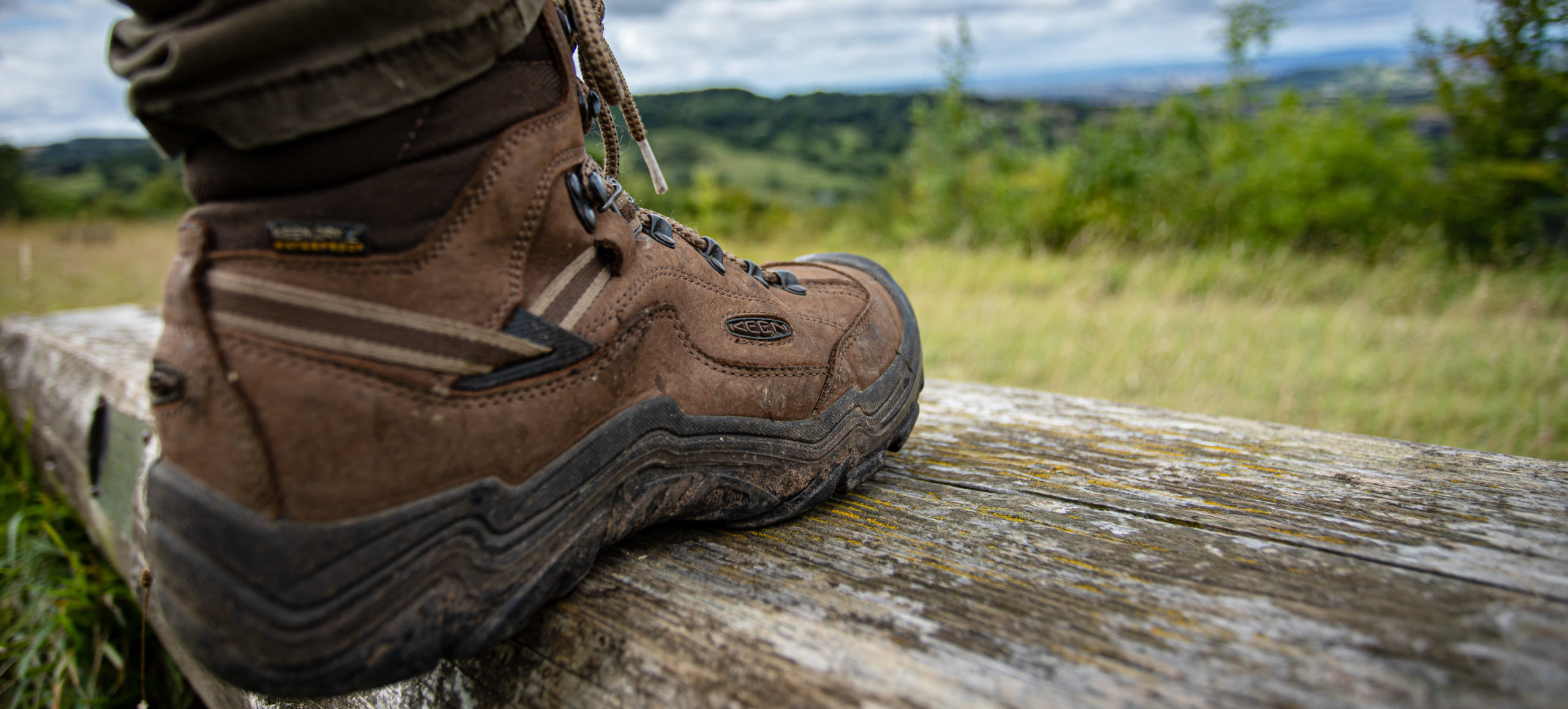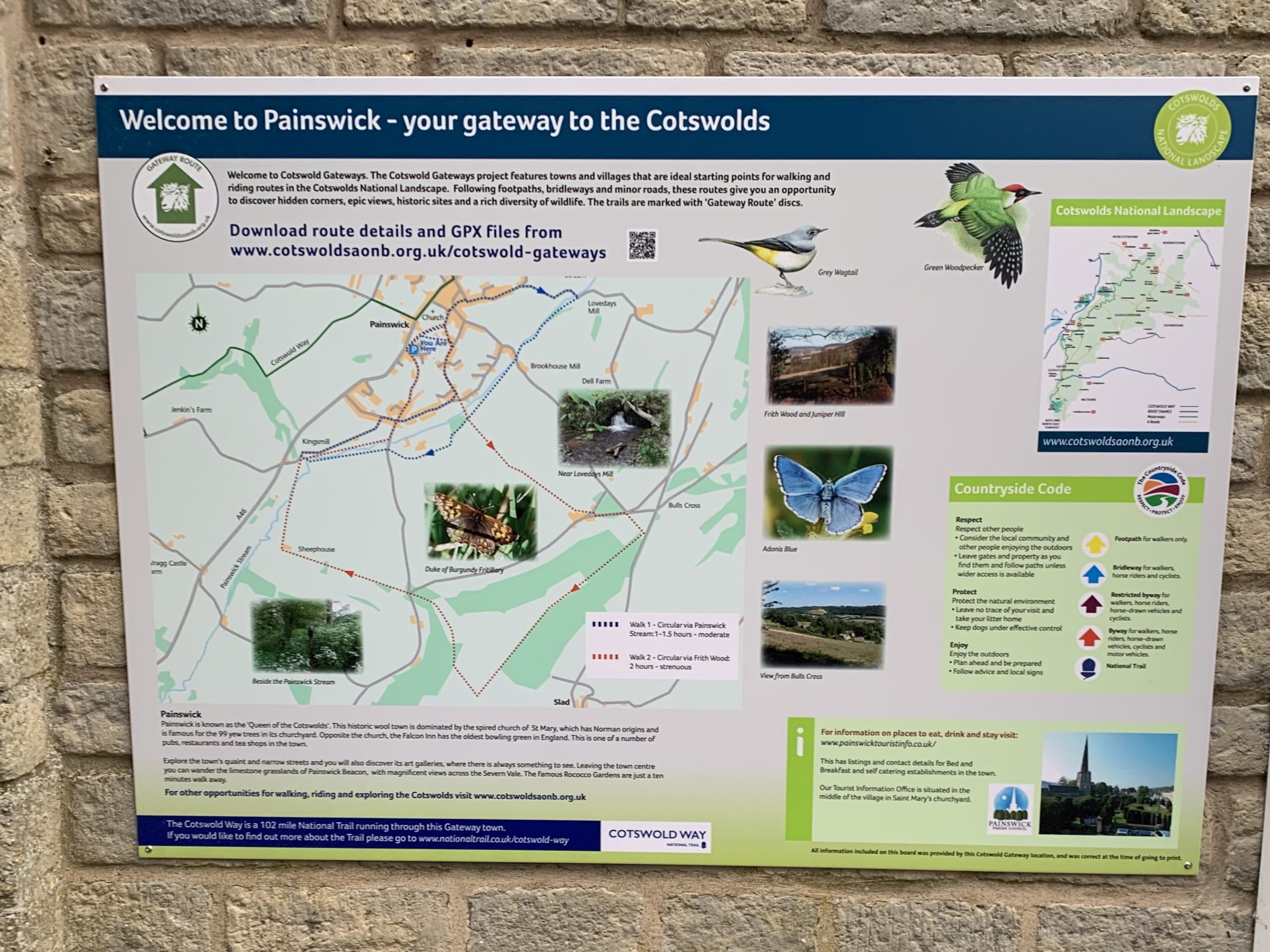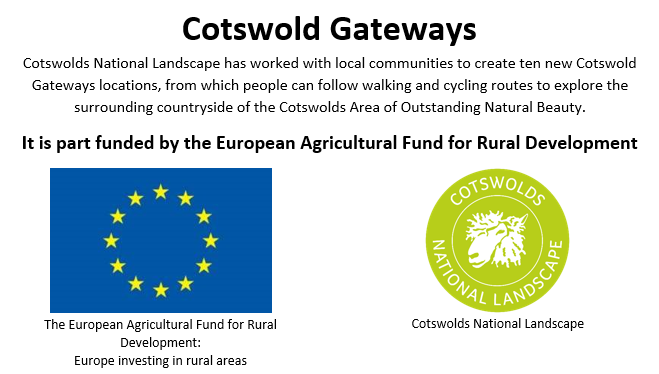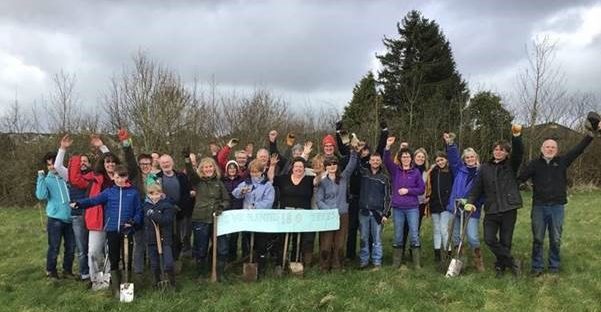
A grand total of £25,000 has recently been awarded to 14 exciting new projects across the Cotswolds, and has been allocated by the Caring for the Cotswolds Grants Panel, following their biggest meeting (online) so far. The project applications had already been reviewed by the newly formed Youth Panel for the scheme – and their insightful feedback helped inform the decision making.
One of the new projects, pictured above, was developed by Chalford Parish Council. The village has an active biodiversity group whose members have worked hard in recent years to restore a number of wildlife sites in the village. This project will create a guided nature trail featuring these sites, so that residents can explore and learn about the wildlife in their area.
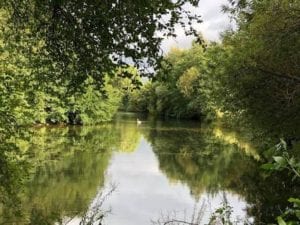
Beckford Nature Reserve. Photo© Mark McCauley
In the north of the Cotswolds, a new project will soon be underway at Beckford Nature Reserve. A new set of new steps will improve the safety and accessibility to the reserve, especially for the elderly and people who find the terrain difficult. Chairman of Trustees, Mark McCauley adds: “We are incredibly proud that Beckford Nature Reserve can offer everyone a place of such beauty and tranquillity, especially during these difficult and challenging times.”
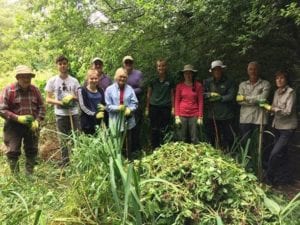
Volunteers clearing invasive Himalayan Balsam. A Caring for the Cotswolds grant will allow the longstanding removal programme to continue Photo© Wiltshire Wildlife Trust. Photo taken pre-coronavirus.
Another of the new projects, this time in the south of the Cotswolds, is being led by Wiltshire Wildlife Trust. The project aims to eradicate Himalayan Balsam on the River By Brook from Castle Coombe to Box. Himalayan Balsam is an invasive species that easily outcompetes native plants and flowers, reducing important nectar sources for butterflies and bees. Furthermore, when Balsam dies off in the autumn, river banks are left exposed and vulnerable to erosion. This project is part of a long running programme by the Wiltshire Wildlife Trust to improve the river for nature and people.
Recognising the importance of young people’s views, project applications were reviewed by the newly formed Youth Panel for the scheme. Youth Panel member Jessica Price comments: “Having the opportunity to escape our homes and look at something other than uniform buildings has been a lifeline during this pandemic, and it is why the Caring for the Cotswolds scheme is so important. By restoring and conserving areas of natural beauty, this positively affects both wildlife and people. The restoration of habitats allows wildlife to flourish, which in turn provides a landscape in which people can come to relax and escape.”
James Webb, Partnerships and Fundraising Lead at Cotswolds National Landscape says, “The 14 new projects are really well spread across the four themes of the Caring for the Cotswolds scheme: conservation, heritage and landscape, improving access, and education and interpretation. It’s especially pleasing to see so many local organisations developing projects that encourage and enable people to access and enjoy the countryside. Through the pandemic, we’ve seen that people value being out in the fresh air more than ever, and these new projects are a real celebration of that idea.
We’d like to give a big thank you to the participating businesses and their customers whose generous contributions help to keep the Cotswolds a special place to live, work, and visit.”
The Caring for the Cotswolds scheme is managed by the Cotswolds National Landscape team. The scheme is built around a visitor-giving model, where visitors voluntarily contribute to member businesses, who pass the funds along to be allocated as grants to projects that benefit the Cotswolds unique landscape and heritage. The full list of new projects is as follows:
Conservation of habitats and species
- Box Parish Council – £2,350 grant towards habitat improvement work along ‘The Lovar Walk’, as well as seating and interpretation. Due to complete October 2021.
- Bradford on Avon Town Council – £2,480 grant towards a biological evaluation of an ancient woodland to help inform and facilitate future work. Delivered in partnership with The Friends of Becky Addy Wood. Due to complete August 2021.
- National Trust – £1,750 grant towards the installation of a new cattle drinking trough to facilitate conservation grazing across a wider area of Boundary Court Farm, Woodchester. Due to complete September 2021.
- Wiltshire Wildlife Trust – £1,326 grant towards a programme to eradicate Himalayan Balsam, an invasive species, on the River By Brook from Castle Coombe to Box. Due to complete September 2021.
Heritage and landscape
- Leafield Parish Council – £2,313 grant towards the restoration of the Leafield Lychgate; an impressive war memorial at the entrance to the church yard. Due to complete April 2021.
- Radway Parish Council – £1,384 grant towards improved access to Old St Peter’s churchyard, with interpretation on the history of the site and notable tombs, building on existing interest in the area from the Civil War. The project will culminate in the production of a heritage trail leaflet. Due to complete May 2022.
- The Bath Stone Museum Quarry Trust – £1,900 grant towards the restoration of the Box Quarry Crane, which will be located in Bath and tell the story of the Cotswolds industrial heritage. Due to complete November 2021.
Improving access
- Beckford Nature Reserve – £1,676 grant towards a set of new steps to improve the safety and accessibility to the reserve, especially for the elderly and people who find the terrain difficult, and easier to maintain for the future. Due to complete March 2021.
- Chalford Parish Council – £1,315 grant towards the creation of a guided walking trail of existing wildlife sites in the village, including new information boards, to encourage residents and visitors to explore the area. Due to complete July 2021.
- Tetbury Rail Lands Regeneration Trust – £2,500 grant towards the surfacing of the new section of the Tetbury Trail – extending the multi-user path by 1km for the benefit of residents and visitors. The new section allows people from Tetbury to walk, run, cycle, or ride to the Trouble House café/restaurant. Due to complete April 2021.
- Tysoe Parish Council – £1,262 grant towards the development of a nature trail using the local network of public footpaths and a series of interpretation boards. The trail will connect wildlife sites and will be available online and via a leaflet. Due to complete December 2021.
Education and interpretation
- Chipping Campden School – £2,500 grant towards construction of “The Well” – a straw bale roundhouse. The Roundhouse will be used for delivering activities for the students and the community. It will also act as a hub for craft and environmental education. Due to complete November 2021.
- Sladebank Woods CIC – £1,375 grant towards construction of a pole structure for use as an Education shelter. Built by volunteers with a range of abilities, it will be the focal point for a range of future events, including bringing young people with severe learning difficulties into nature to develop practical and life skills. Due to complete August 2021.
- Yatton Keynell Parish Council – £801 grant towards the restoration of the village pond in partnership with the local primary school. The project will involve planting new native species and pupils will undertake pond surveys to measure the health of the environment. Due to complete September 2021.
The new projects are in addition to the projects that the scheme has already funded. Further details and photographs of projects supported can be seen here: https://www.cotswolds-nl.org.uk/looking-after/caring-for-the-cotswolds/
ENDS
Notes to editors:
- The Cotswolds National Landscape was designated as an Area of Outstanding Natural Beauty (AONB) in 1966 in recognition of its rich, diverse and high quality landscape. www.cotswolds-nl.org.uk
- The Cotswolds National Landscape is looked after by an independent organisation (officially titled Cotswolds Conservation Board) established in 2004 which has a small employee team along with 37 board members – 15 nominated by local authorities, 8 by parish councils and 14 appointed by the Secretary of State.
- The Cotswolds is the third largest protected landscape in England after the Lake District and Yorkshire Dales National Parks and represents 10% of the total AONB area in the UK. It covers 2,038 square kilometres (790 square miles), stretching from Warwickshire and Worcestershire in the north, through Gloucestershire and Oxfordshire, down to Bath and Wiltshire in the south.
- The organisation’s land management position statements are for use by local authorities, government agencies, land agents, advisers, land managers, farmers and the public. They, along with the planning and transport position statements are available online at www.cotswolds-nl.org.uk
- Areas of Outstanding Natural Beauty (AONB), along with National Parks, are considered to be the most special landscapes in the country and belong to an international family of protected areas. There are 38 AONBs in England and Wales, and a further eight in Northern Ireland. For further details, visit: www.landscapesforlife.org.uk. For details of the 15 National Parks in the UK visit: www.nationalparks.uk
